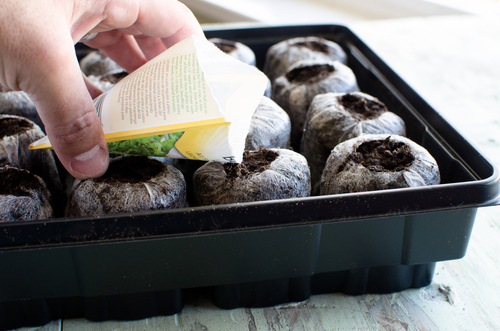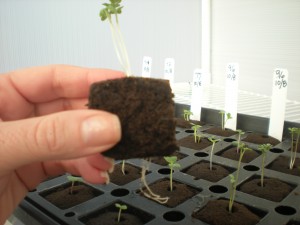One of the great joys of early spring is entering the warm greenhouse each morning and studying each pot carefully, searching for new signs of life as seedlings start to emerge. Every new set of leaves or flower buds is cause for excitement in those early stages.
Starting your own plants from seed has so many advantages
- Reduce your grocery bills
- Grow special varieties of produce that you can’t find in the grocery store or your area
- Maximize your food’s nutrition by eating fresh picked and local
- Save money and start flowers to fill your flower beds with color
- Enjoy the best tasting food possible
- Share with your family and friends
- And so much more!
If you’ve never started plants from seeds, it’s easier than you may think. The Q&A below tells you how. Even if you’re a veteran seed starter, we hope it will give you a few tips to make the job simpler.
FAQ about seed starting:
When should I plant my seeds?
If you’re going to keep your plants in the greenhouse, you can start the seeds anytime. If you plan to move your seedlings to your in-ground garden, count backwards from your last frost date to determine your best planting time. This produce chart provides germination and crop times, which will also help you plan.
What are my best sources for seeds?
There are many reputable online seed companies, and of course you can get seeds from feed and garden supply stores as well. Just make sure you plant seeds for the current year. You can try to use leftover seeds from previous years, but more of the seeds will germinate if you start with new ones.
What containers are best?
You can plant seeds in recycled egg cartons, as well as commercial flats or cells. If you use existing pots, disinfect them with distilled white vinegar for a safer alternative to bleach. Whatever you plant in, the container should be about 2-3 inches deep and have drainage holes in the bottom.
What kind of soil should I use?
Your best bet is a soil-less growth medium. There are many available specifically for seed starting. Don’t use anything dense or compact, because the roots won’t be able to poke through heavy soil.Never use soil right out of the garden, which may contain fungal spores, weed seeds, and pests. Whatever you use, be sure to moisten the medium before planting the seeds.
How deeply should I plant?
The required depth will vary by plant. Some thrive in shallow soil, while others need deeper planting for best emergence. Follow the instructions provided on the seed packets.
How do I care for the newly planted seeds?
At first, your seeds will need heat and moisture. Cover them with a transparent moisture dome or plastic cover. Put them near a heat source, or use a heat mat specifically designed for seed-starting.
Most seeds are nice and cozy when it’s about 70° F. Don’t let the soil dry out, though. Watch your plantings thoroughly, and at the first sign of sprouting, take the cover off and move them to a sunny spot or under a grow light.
To keep them hydrated, it’s best to mist your seedlings or water them from the bottom. Traditional top watering may result in excess moisture or fungal attacks on leaves and stems.
How can I speed up germination of my seeds?
Soil warming mats work very well for speeding up germination, keeping
temperatures steady, and generating stronger seedlings that are less susceptible to transplant shock.
Do I need to fertilize the soil?
Not at first. Seeds have a food supply stored inside to sustain them until they become seedlings. Once the seed has grown into a seedling, you can add a fertilizer to the growth medium if you like.
How quickly will my seeds sprout?
Many seeds sprout within 5-7 days; some can take up to 14 days. When they do sprout, remove the moisture covers, recheck the instructions for each plant’s temperature and light needs, and ensure the right conditions within that part of your greenhouse.
It’s a delightful feeling to be able to begin your own seeds and grow your plants right on through to harvest—one of the main reasons people garden in greenhouses. In fact, to many of us, the process itself is almost as satisfying as enjoying the bounty of flowers, herbs, and produce that results!
Back to our home page


